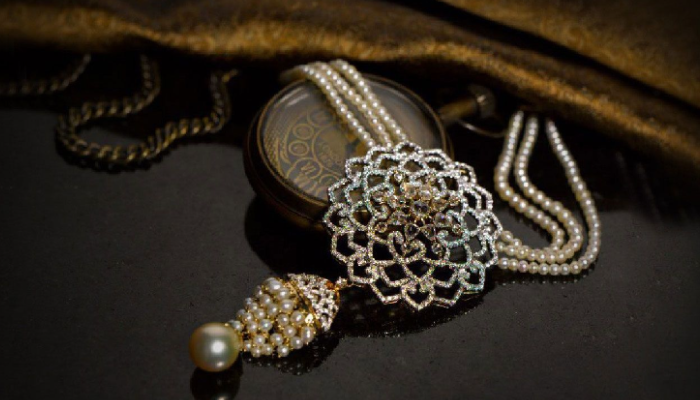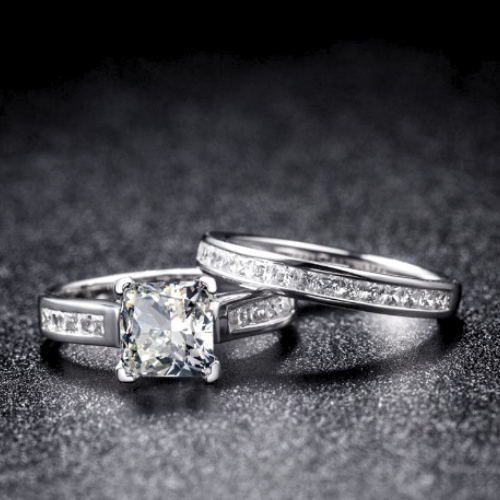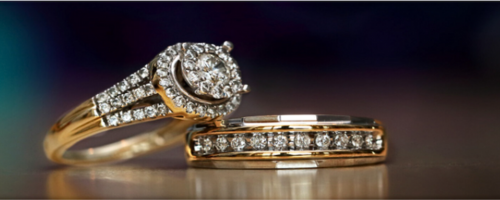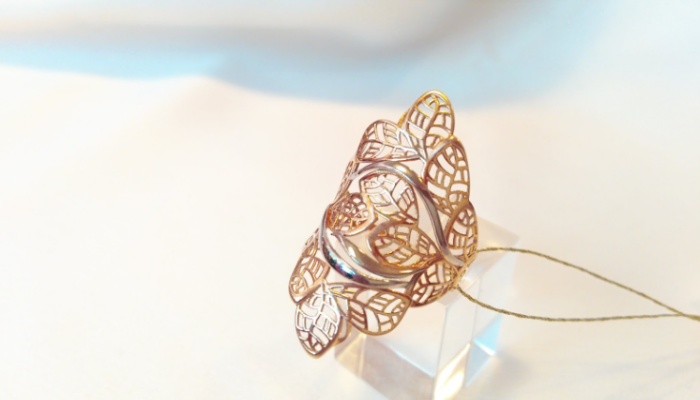
In a world filled with mass produced accessories, bespoke jewellery shines as a symbol of uniqueness and personal style. It’s about carrying a piece of your own history wherever you go, not only about wearing something pretty. This guide reveals the art of infusing your story into treasures. We’ll discuss how to turn memories, significant moments and core beliefs into personalised pieces. From choosing materials to collaborating with artisans, you’ll learn the process of crafting jewellery that is not just worn but experienced. Whether you’re celebrating an occasion or embracing your individuality, this journey into customised adornments assures to transform your tales into tangible art.
Understanding Bespoke Jewellery
Bespoke jewellery is far more than just a shiny trinket or a status symbol. It’s a custom-crafted piece that embodies your personal story, values, and aesthetic preferences. Unlike off-the-shelf items that cater to general tastes, bespoke pieces are designed and created specifically for you, often involving a collaborative process between you and a skilled artisan.
The benefits of choosing custom-made pieces are numerous and profound:
- Uniqueness: In a world of mass production, you’ll have the assurance that no one else will have exactly the same piece as you. Your jewellery becomes as unique as your fingerprint.
- Quality: Artisans often use higher-grade materials and pay more attention to detail, resulting in pieces that not only look better but also last longer.
- Emotional Value: Because the piece is infused with your personal story, it carries deeper meaning and sentimental worth. It becomes a tangible connection to your memories and values.
- Perfect Fit: Custom sizing ensures comfort and proper wear, especially important for rings and bracelets.
- Creative Control: You have a say in every aspect of the design, from the overall concept to the tiniest detail.
- Investment Potential: High-quality, unique pieces often retain or even increase in value over time.
When you choose “The Jewellery Mechanic” for best bespoke jewellery, you’re not just getting a product; you’re investing in a process that turns your ideas, memories, and dreams into tangible, wearable art. This collaborative journey often becomes a cherished memory in itself, adding another layer of significance to your custom piece.
The Art of Storytelling Through Jewellery: A Timeless Tradition
Jewellery has been used to tell stories for millennia, serving as a silent yet powerful communicator of personal and cultural narratives. From ancient Egyptian amulets believed to protect the wearer in the afterlife to Victorian mourning jewellery that kept loved ones close even after death, accessories have long been vessels for our most profound stories and beliefs.
“Jewellery is a very personal thing… it should tell a story about the person who’s wearing it.” – Garance Doré
This tradition continues today, with modern twists that reflect our contemporary lives and values. Personal stories enhance the value of jewellery in ways that go far beyond monetary worth. They transform a simple accessory into:
- A conversation piece that opens doors to sharing your experiences
- A family heirloom that carries your legacy to future generations
- A daily reminder of what’s important to you, your goals, and your journey
- A symbol of personal growth and transformation
- A connection to your cultural heritage or personal philosophy
In essence, when you wear jewellery that tells your story, you’re not just accessorising – you’re making a statement about who you are and what matters to you.
Identifying Your Personal Symbols and Stories: A Journey of Self-Discovery
Before diving into the design process, it’s crucial to take time for reflection. What moments, people, or values define you? This introspective journey can be as rewarding as the final piece of jewellery itself. Consider these elements:
- Milestones: Graduations, marriages, births, career achievements, personal triumphs
- Loved Ones: Family crests, initials, birthstones, shared memories
- Passions: Hobbies, career paths, causes you support, lifelong dreams
- Heritage: Cultural symbols, ancestral connections, traditional motifs
- Personal Growth: Overcoming challenges, transformative experiences, life lessons
- Places: Significant locations, travel memories, childhood homes
- Nature: Favourite animals, plants, natural phenomena that inspire you
- Abstract Concepts: Personal values, spiritual beliefs, life philosophies
Exercise: Create a mind map of your life’s significant elements. Start with your name in the centre and branch out with different categories (e.g., family, career, passions). Under each category, list specific memories, symbols, or ideas. This visual representation can help you identify symbols and stories that resonate deeply with your journey.
Remember, the goal isn’t to include everything, but to identify those elements that speak most powerfully to your personal narrative. Sometimes, the most meaningful symbols are the ones that might seem insignificant to others but hold deep personal meaning for you.

Translating Stories into Jewellery Designs: From Concept to Creation
Once you’ve identified your personal symbols and stories, it’s time to bring them to life in jewellery form. This is where the expertise of a skilled jeweller becomes invaluable. Here’s a detailed look at how to approach the design process:
- Communicate Your Vision:
- Prepare a clear description of your idea
- Gather images that inspire you (not just jewellery, but anything that captures the essence of your concept)
- Be open about your budget and timeline
- Sketch and Brainstorm:
- Collaborate with your jeweller on rough sketches
- Don’t worry about artistic perfection – focus on conveying ideas
- Explore different ways to represent your symbols
- Create a Mood Board:
- Collect images that inspire your desired style and feel
- Include colour schemes, textures, and patterns
- Add words or phrases that capture the emotion you want to evoke
- 3D Modelling:
- Many jewellers now use CAD (Computer-Aided Design) software to create precise 3D models
- This allows for detailed visualisation and easy adjustments
- You can often view the model from all angles before proceeding
- Prototyping:
- Review wax or 3D-printed prototypes
- This gives you a tangible sense of size, weight, and how the piece will look on you
- Make any final adjustments before production begins
Throughout this process, don’t be afraid to ask questions and provide feedback. Your input is crucial in ensuring the final piece truly represents your vision.
Remember, The Jewellery Mechanic specialises in turning abstract concepts into stunning bespoke jewellery. Their expertise can be invaluable in this creative process, helping you navigate the technical aspects while staying true to your personal story.
Materials and Techniques for Bespoke Jewellery: Crafting Your Narrative
The materials and techniques you choose play a crucial role in how your story is told through your jewellery. Each element contributes to the overall narrative, from the metal that forms the base to the smallest decorative detail.
Metals: The Foundation of Your Piece
Different metals not only have different physical properties but also carry their own symbolism and emotional resonance:
| Material | Symbolism | Durability | Cost | Best For |
| Gold | Luxury, purity, wisdom | High | High | Timeless pieces, wedding rings |
| Silver | Clarity, strength, intuition | Medium | Medium | Everyday wear, bohemian styles |
| Platinum | Rarity, prestige, strength | Very High | Very High | High-end pieces, engagement rings |
| Copper | Healing, warmth, love | Low | Low | Artistic pieces, mixed metal designs |
| Titanium | Strength, innovation | Very High | Medium | Modern designs, hypoallergenic needs |
Gemstones: Adding Colour and Meaning
Gemstones can be selected not only for their beauty but also for their traditional meanings or personal significance:
- Diamonds: Endurance, purity, and eternal love
- Emeralds: Growth, harmony, and wisdom
- Rubies: Passion, vitality, and courage
- Sapphires: Truth, loyalty, and sincerity
- Opals: Creativity, spontaneity, and change
- Amethysts: Peace, meditation, and sobriety
- Pearls: Purity, integrity, and new beginnings
Don’t feel limited to traditional precious gems. Semi-precious stones, or even rocks collected from meaningful locations, can add unique personal touches to your piece.
Innovative Techniques: Adding Layers to Your Story
Modern jewellery-making techniques allow for unprecedented levels of personalization:
- Fingerprint Imprints: Incorporate the unique pattern of your fingerprint or that of a loved one
- Sound Wave Patterns: Engrave the waveform of a special song or a loved one’s voice
- GPS Coordinates: Mark the location of a significant event or place
- Morse Code: Hide secret messages in your design
- Miniature Scenes: Create tiny landscapes or scenes that represent important memories
- Photo Etching: Transfer photographic images onto metal surfaces
These techniques allow for subtle yet deeply personal elements that may not be apparent to others but hold great meaning for you.
Design Elements to Consider: The Language of Form
When crafting your bespoke piece, pay attention to these design elements, each of which can contribute to telling your story:
- Shape:
- Circles for eternity, wholeness, and unity
- Triangles for balance, harmony, and progression
- Squares for stability, reliability, and order
- Spirals for growth, evolution, and journey
- Colour: Use colour psychology to evoke specific emotions or represent aspects of your story:
- Red for passion and energy
- Blue for calm and trust
- Green for growth and balance
- Purple for luxury and creativity
- Texture:
- Smooth surfaces for simplicity and clarity
- Textured finishes for complexity and depth
- Contrasting textures to represent different aspects of your story
- Size and Proportion: Consider not just the overall size of the piece, but how different elements relate to each other. This can be used to emphasise certain aspects of your story over others.
- Negative Space: Sometimes, what’s not there is as important as what is. Use empty space deliberately to create balance or highlight certain elements.
Remember, these elements should work together harmoniously to create a cohesive piece that tells your story effectively.

Incorporating Personal Objects into Jewellery
Transforming existing items into new pieces is a powerful way to honour your history. This could involve:
- Melting down a family heirloom to create a new ring
- Setting a found pebble from a memorable beach trip
- Incorporating a piece of fabric from a wedding dress
Ethical Consideration: When using organic materials, ensure they’re sourced responsibly and legally.
Collaborative Process with Jewellers: Choosing Your Creative Partner
Finding the right artisan is crucial for bringing your vision to life. The relationship between you and your jeweller is a partnership, one that requires clear communication, mutual respect, and shared enthusiasm for your project.
Look for jewellers who:
- Have extensive experience with bespoke projects
- Communicate clearly and listen attentively to your ideas
- Provide a portfolio of custom work that demonstrates versatility
- Offer 3D modelling or prototyping services
- Are transparent about their process, timeline, and pricing
- Show passion for their craft and your project
When you choose The Jewellery Mechanic for best bespoke jewellery, you’re partnering with experts who understand the delicate balance between artistic vision and wearable functionality. They bring not only technical skill but also a wealth of experience in translating personal stories into beautiful, meaningful pieces.
What to Expect in the Collaboration Process
- Initial Consultation: Discuss your ideas, budget, and timeline. The jeweller should ask questions to understand your vision fully.
- Design Proposal: The jeweller presents initial designs based on your discussion. This may include sketches, 3D renderings, or material samples.
- Refinement: Provide feedback and work with the jeweller to refine the design until it perfectly captures your vision.
- Material Selection: Choose specific gemstones, metals, and other materials. The jeweller should explain the properties and care requirements of each.
- Prototype Review: Examine a wax model or 3D print of your piece. This is your chance to see how it will look and feel in real life.
- Crafting: The jeweller creates your piece, keeping you updated on progress.
- Final Review: Examine the finished piece carefully. A good jeweller will be happy to make minor adjustments if needed.
- Care Instructions: Receive detailed information on how to care for and maintain your new piece.
Remember, the goal is to create a piece that you’ll treasure for years to come. Don’t hesitate to ask questions or express concerns throughout the process.
Case Studies: Successful Personal Story Jewellery
Let’s examine a few real-life examples of how personal stories have been incorporated into bespoke jewellery. These cases illustrate the diverse ways in which meaningful narratives can be translated into wearable art:
- The Constellation Locket: A grieving widow had a locket created that, when opened, revealed a miniature star map of the night sky on the day her husband passed away. The outside was engraved with their wedding date, creating a piece that celebrated their love while memorialising his passing.
- The Explorer’s Compass Ring: An avid traveller designed a ring with a working compass, engraved with coordinates of her favourite destinations. The band was textured to resemble topographic maps, with tiny gemstones marking significant places she’d visited.
- The Survivor’s Phoenix Pendant: A cancer survivor worked with a jeweller to create a phoenix-shaped pendant. The body was formed from gold melted down from jewellery she wore during treatment, with ruby eyes symbolising her fighting spirit.
- The Harmony Necklace: A musician had a necklace made that depicted the sound wave of her grandmother singing her favourite lullaby. The wave was crafted in gold and suspended between two music notes made of her birthstone.
These examples showcase how deeply personal bespoke jewellery can be, turning memories, emotions, and life stories into wearable art. They demonstrate that with creativity and skilled craftsmanship, almost any narrative can be captured in jewellery form.
Caring for Your Bespoke Jewellery: Preserving Your Story
Your custom piece is more than just jewellery; it’s a tangible piece of your personal history. Proper care ensures it will last for generations, continuing to tell your story. Here are detailed care instructions:
- Storage:
- Store each piece separately to prevent scratching
- Use a soft-lined jewellery box or individual pouches
- Keep in a cool, dry place away from direct sunlight
- Cleaning:
- Clean regularly with a soft, lint-free cloth
- For more thorough cleaning, use warm water and mild soap
- Avoid harsh chemicals or ultrasonic cleaners unless advised by your jeweller
- Pat dry thoroughly and let air dry completely before storing
- Wearing:
- Remove before swimming, bathing, or applying cosmetics
- Put on jewellery after applying perfume or hairspray
- Take off before physical activities or sports
- Regular Maintenance:
- Have your piece professionally inspected annually
- Check for loose stones or signs of wear regularly
- Have white gold redipped every few years to maintain its colour
- Specific Care for Materials:
- Pearls: Wipe with a soft, damp cloth after each wear
- Opals: Avoid extreme temperature changes
- Silver: Use a specialised silver cloth to prevent tarnishing
- Platinum: Professional polishing may be needed to maintain its lustre
- Documentation:
- Keep all documentation related to your piece, including design sketches and material certifications
- Consider having your jewellery appraised and insured, especially high-value pieces
Remember, each piece may have specific care requirements based on its materials and design. Always consult with your jeweller for specific care instructions for your unique piece.
The Investment Value of Personal Story Jewellery
While the emotional value of bespoke jewellery is clear, it can also be a smart financial investment:
- Quality Materials: Precious metals and gemstones often appreciate in value over time. The higher quality materials used in bespoke pieces can make them particularly valuable.
- Artistic Merit: Unique designs, especially those created by renowned artisans, can become collector’s items. The story behind the piece adds to its provenance and potential value.
- Family Legacy: Custom pieces often become cherished family heirlooms, passed down through generations. This not only preserves your story but can also increase the piece’s sentimental and monetary value over time.
- Craftsmanship: The superior craftsmanship of bespoke jewellery often means it will last longer and maintain its quality, preserving its value.
However, it’s important to remember that the true return on investment is the joy and meaning the piece brings to your daily life. A well-crafted piece of personal story jewellery serves as a constant reminder of what’s important to you, which is, in many ways, priceless.
Ethical and Sustainable Practices in Bespoke Jewellery
As consumers become more conscious of the environmental and social impact of their purchases, ethical and sustainable practices in jewellery making have gained importance. When creating your personal story jewellery, consider these ethical practices:
- Source Conflict-Free Diamonds and Gemstones: Ensure your stones are certified conflict-free and ethically sourced.
- Use Recycled Metals: Many jewellers now offer the option to use recycled gold, silver, or platinum, reducing the environmental impact of mining.
- Support Local Artisans and Small Businesses: Choosing a local jeweller like The Jewellery Mechanic for best bespoke jewellery often means supporting fair labour practices and reducing transportation-related carbon emissions.
- Opt for Lab-Grown Gemstones: These have the same physical and chemical properties as mined stones but with a smaller environmental footprint.
- Choose Eco-Friendly Packaging: Request minimal, recyclable, or reusable packaging for your finished piece.
- Consider Alternative Materials: Explore options like ethically sourced wood, recycled plastics, or other innovative, sustainable materials that align with your values.
By making ethical choices in your bespoke jewellery creation, you add another layer of meaning to your piece – one that reflects your commitment to social and environmental responsibility.

Technology’s Role in Personal Story Jewellery
Advancements in technology have opened new avenues for personalization and storytelling in jewellery:
- 3D Printing: Allows for complex designs that would be impossible or prohibitively expensive with traditional methods. It also enables rapid prototyping, so you can see and feel your design before final production.
- Augmented Reality (AR): Some jewellers now offer AR apps that let you virtually “try on” designs before committing. This can be especially helpful for visualising how a piece will look and feel.
- Smart Jewellery: Incorporate NFC (Near Field Communication) chips into your jewellery to store digital memories, photos, or even sound clips. When scanned with a smartphone, these can reveal hidden aspects of your story.
- Laser Engraving: Enables incredibly detailed and precise engravings, allowing for miniature artworks or lengthy texts to be incorporated into your piece.
- Computer-Aided Design (CAD): Allows for precise control over every aspect of the design, ensuring your vision is accurately translated into the final piece.
These innovations make it possible to create increasingly intricate and meaningful pieces, pushing the boundaries of what’s possible in personal story jewellery.
Gifting Bespoke Jewellery with Personal Symbols
Custom jewellery makes for an unforgettable gift, one that shows deep thoughtfulness and care. When planning a bespoke gift:
- Subtly gather information about the recipient’s tastes, stories, and meaningful symbols
- Consider milestone events or shared experiences that could be represented
- Think about the recipient’s lifestyle and choose a piece they’ll be able to wear often
- Allow plenty of time for the design and creation process
- Present the piece with a card explaining its significance and the thought behind each element
Remember, the thought and effort put into a bespoke piece often mean more than its monetary value. It’s a way of showing someone that you truly see and understand them.
Conclusion
Incorporating personal stories and symbols into bespoke jewellery is a beautiful way to wear your narrative. It’s an art form that combines craftsmanship, emotion, and individuality. Whether you’re commemorating a special moment, honouring a loved one, or simply expressing your unique self, custom jewellery offers a canvas limited only by your imagination.
As you embark on your journey to create a truly personal piece, remember that the process itself is part of the story. Each decision, from choosing materials to finalising designs, adds another layer of meaning to your bespoke creation. The collaboration with your chosen artisan, the moments of inspiration, and even the challenges you might face along the way all become part of the rich tapestry of your jewellery’s history.
So, take that first step. Reach out to a skilled artisan like “The Jewellery Mechanic” for best bespoke jewellery, and start turning your stories into wearable art. Your perfect piece is waiting to be crafted, ready to become a treasured part of your personal history – a small but mighty testament to who you are, where you’ve been, and what you hold dear.
FAQs
Q: How long does the bespoke jewellery process typically take?
A: The process can take anywhere from 2-8 weeks, depending on the complexity of the design and the jeweller’s workload. More intricate pieces or those requiring rare materials might take longer.
Q: What’s the average cost range for custom pieces?
A: Prices vary widely based on materials and design complexity, typically ranging from £500 to £10,000 or more. Simple silver pieces with minimal stonework start at the lower end, while complex gold or platinum pieces with high-quality gemstones can reach into the thousands.
Q: Can I use my own materials in a bespoke jewellery project?
A: Many jewellers welcome this, but the materials will need to be assessed for quality and suitability. Be prepared for the possibility that some materials might not be usable due to quality or durability concerns.
Q: How do I ensure the quality of my custom-made jewellery?
A: To ensure quality of bespoke jewellery, choose a reputable jeweller, ask for certifications of materials, and don’t hesitate to request references or examples of previous work. Reputable jewellers will often provide guarantees on their work and materials.
Q: Are there any symbols or materials to avoid in personal jewellery?
A: Be mindful of cultural appropriation and ensure any symbols used are personally meaningful to you. Avoid materials that may cause allergic reactions if you have sensitive skin. Also, consider the durability of materials if the piece is intended for daily wear.
Q: Can bespoke jewellery be resized or altered later?
A: In most cases, yes, but the extent of possible alterations depends on the original design. Discuss potential future changes with your jeweller during the design phase.
Q: How do I care for my bespoke jewellery if it includes unusual materials?
A: Your jeweller should provide specific care instructions. Generally, unusual materials may require more careful handling and specialised cleaning methods.
Remember, creating bespoke jewellery is a journey of self-expression and craftsmanship. Don’t hesitate to ask questions and fully engage in the process to ensure your final piece is everything you’ve dreamed of and more.
